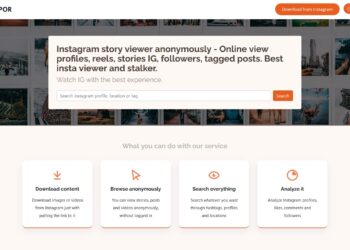A good website is not very worthy if people don’t visit it. The reason why some websites are hardly visited is that they have no traffic and hence cannot be found easily.
If visitors have to search a website, it should be visible for everyone on search engines. Besides, with the increasing number of websites on the internet, ranking well is consequently becoming hard.
Ranking well means that your website will be among the best sites when people search for given keywords. If a website shows among the top results, there is a high likelihood it will be visited.
It is the wish of about every website owner to rank well. However, this takes time. Therefore, you require being equipped with the right skills and tactics to enhance the visibility of your website. You may want help from experts.
For your help this article presents you the 10 best tips to improve your site’s ranking effectively within a very short time. Check them out!
Tip 1: Conduct Keyword Research
Proper keyword research is entry to the success of an SEO campaign. It sets the foundation that will assist you make your website rank top in the search engine results page.
Keywords are phrases that individuals enter into search engines, also called “search queries.” Keyword phrases are phrases that contain keywords; they should sound conversational and be particular to your business.
To search targeted keywords for every page on your website, think about how your audience might search for that particular page, or how they would ask a friend for more information on a topic related to your business.
Keyword Planner is a totally free Google AdWords tool. It assists business owners find targeted, relevant keywords to improve website rankings.
You can also use Keyword Planner to discover new keyword ideas, plus the average search volume for keywords, competition, and so more.
Once you identify a relevant keyword phrase, copy it several times on a web page, particularly in the headers, body text, and URL.
Tip 2: Post Useful, Relevant Content
According to Michigan Tech, nothing increase web traffic and improve the authority of your website as well as posting quality content.
You require creating content that answers the requirements of your target audience.
Once you find what your audience requires, write about it. Be sure to add keywords in your content as naturally as possible. Examples of website content include:
- Blogs
- About Us
- Services
- FAQs
- Contact Us
Be original, and don’t copy content from other sites.
Tip 3: Update Your Content
Search engines value recent content because it tends to be more highly relevant.
There is no limit to the number of updates you make, and generally more frequently updates will be the better for your website. For blogging, you should post at least once a week to improve your website traffic.
Furthermore, to publishing new content, you should update old content and correct any spelling or grammar errors. Although the spelling and grammar aren’t ranking factors of Google, these mishaps still only affect the user experience.
Tip 4: Boost Your Website’s Speed
Search engines assume site speed when ranking websites. If your site loads very slowly, then visitors are more likely to leave. Visitors are most likely to bounce if your site takes more time than 3 seconds to load.
To improve your website speed, you should:
- Less the number of plug-ins on your site
- Use caching plug-ins
- Optimize images by reducing the size of the file
By updating your website, you can also reduce the time it takes to load and improve your ranking.
Tip 5: Use Header Tags
Search engines, with Google, also put more emphasis on keyword-laden header tags. Include relevant terms in the header tags improve the SEO ranking of your website.
You can also use header tags to divide your content into different sections. Be sure to format them, using:
- Use H1 to including the targeted keywords.
- Use H2s for keeping your page concise.
- Use H3s for useful link groups to other relevant sources.
- Use H4s for targeted, niche subsections related to your topic.
Nobody likes reading a long content and header tags also assist visitors easily skim to locate the information they require.
Header tags help readers navigate your content while boosting SEO.
Tip 6: Use Images or Videos
Images or videos both improve user experience by giving a message while grabbing your target audience’s attention.
For example, Search Engine Land gives published articles with images or videos, encouraging its audience to spend more time on its pages.
Images attract the user’s attention, encouraging them to search the website and return in the future.
Videos upgrade the conversion and engagement rates. In fact, websites that use videos get a higher conversion rate.
Multimedia elements, including videos or images, signal quality content and boost SEO.
Tip 7: Stylish Your Website’s Design and Layout
To increase the number of visitors of your website, make sure your website’s design is user-friendly.
Proper formatting includes:
- Using a font size and typography that are very clear to read
- Using bold type to highlight important content
- Presenting lists in a bulleted or numbered format
It’s very important to consider design as you test your website’s mobility. Visitors should be able to get and read your website on any mobile device.
You can also use tools to test your website’s mobility.
A great web design delivers a great experience for users while helping your website rank in search results.
Tip 8: Optimize for Mobile
Google recently rolled out it’s for mobile first indexing which penalizes sites that are not optimized for mobile.
This makes sense, because more than half of the traffic came from mobiles in 2018. If you don’t optimize for mobile, your site won’t be viewed clearly on these mobile devices, hurting your Google ranking.
There are 3 methods to optimize for mobile:
- Responsive Web Design: Serves the same HTML code on the same URL regardless of the visitors device
- Different URLs: Serves various code to each device, and on separate URLs
- Dynamic Serving: Uses the same URL regardless of device, but makes a different version of HTML for various device types
Without optimizing for mobile, you’ll miss out on the opportunity to rank top and offers a good experience to mobile users.
Also Look : Write for us Technology
Tip 9: Install Social Media Sharing Buttons
The number of times your content is shared on any social media sites that can affect your SEO ranking.
Social media drives purchasing behavior. In a survey of 6,000 respondents, about 4 in 10 Facebook users buy a product after liking or sharing it. About 45% of social media users have buy an item after seeing others share it on social media.
Putting social sharing buttons on your site makes it easy for visitors to share your content. In return, your site ranks good on search engine results.
For example, Search Engine Land provides a wide range of social sharing buttons that help to grow the site’s readership.
The social media sharing buttons are always present on the left side of Search Engine Land’s pages, but the simple design is unobtrusive.
Social media sharing buttons make it easy for visitor’s to share website content that drives relevant traffic to your website.
Tip 10: Maintain Internal Links and Backlinks
Both external and internal links are great factors for your website ranking.
To keep up your website’s links, run a crawl on your website to find any broken links. If you have any broken links, correct them, or else you’ll end with a user experience issue.
Furthermore, use tools like Ahrefs and Google Analytics to maintain track of any mentions of your site. If any mentions aren’t linked yet, reach out at the webmasters and ask them to convert the mention into a link.
When linking the keywords, don’t abuse exact match anchor text. If a link and anchor text phrase is relevant, use it sparingly. Otherwise, Google and other search engines will conclude that your website content is spammy, affecting your overall ranking.
When adding internal and external links to your website, give attention to each article’s length. Though there is no specific link limitation on a page, having 100 links for a 200-300 word post doesn’t advantage the user and might create a negative impression. Instead, adding targeted links that are designed to connect the user with helpful information.
Watch Your Site Rise to the best
SEO can feel like an overwhelming and constantly changing to do list, but starting with these 10 useful tips will put you on the path to getting top SEO rankings.
Refreshing your website content, including headers and multimedia, gives value for users while keeping your website constantly stocked with new material for search engines to index.
In the backend, you should optimize your site for mobile and make changes that boost site speed. Installing social media sharing buttons and maintaining links will also help search engines recognize that your content is very precious and relevant.
With these 10 useful tips in mind, you’re ready to update your website and optimize it for SEO.
Overall, a great SEO strategy can be broken down into steps that are very simple and easy to implement.















